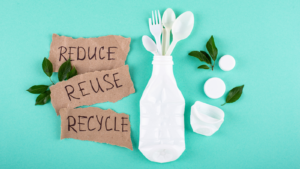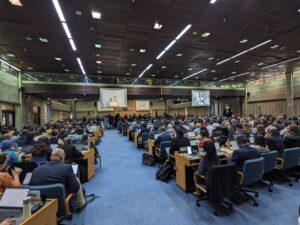
Using biobased plastic to meet the recycled content target for plastic packaging – a false “bonne idée”
In October 2023, Eurostat released its latest data on packaging waste confirming the increase in waste packaging, which reached a new record of 188.7 kg per capita in 2021. This corresponds to an increase of 6% in waste generation in only one year.
When developing the Packaging, Packaging Waste Regulation (PPWR), the European Commission aimed to tackle directly this increasing number of packaging waste by acting directly at its source through the use of waste prevention measures; and by developing reuse targets for different applications as take-away, beverages, etc. Another measure aimed at tackling packaging waste is to improve and increase recycling capacities – however, according to Eurostat, only 38% of plastic packaging was recycled in 2020. To reach the recycling targets for plastic packaging of 55% by 2030, the PPWR’s Article 7 created a strong incentive with the introduction of recycled content for plastic packaging under Article 7.
On 24 October 2023, the ENVI Committee of the European Parliament, in charge of leading this institution’s work on the PPWR, adopted its position. The currently adopted Article 7, setting recycled content targets for plastic packaging, includes a provision to use up to 50% of bio-based plastic to meet the targets of the proposal.
This creates an important loophole as it allows the possibility of using bio-based plastics, i.e. virgin plastic to meet recycled content targets, thus breaking any circularity incentives as it keeps the linear model of plastic production. It is also problematic for the following reasons:
- Recycled content is linked to recycling acting at the end-of-life treatment of materials already introduced on the market. In contrast, bio-based plastic is linked to the conditions in which plastic is produced in the first place. In other words, we are mixing the circular economy agenda with the bio-economy one, with two completely different final goals.
- Using bio-based plastic to meet recycled content will further strengthen the linear model of the plastic sector and, most likely, lead to an increase in overall plastic production – which will represent 32% of the IPCC’s entire budget for limiting warming to 1.5C degrees if keeping the current trend.
- The incentives to develop design-for-recycling will be undermined, as the need to access recycled content to meet the target is cut by half thanks to the possibility of using bio-based content.
- Producing virgin bio-based plastic to meet recycled content will not divert plastic from its current final end-of-life treatment in Europe, where plastic remains mostly incinerated and landfilled (54% according to PlasticsEurope), causing high amounts of GHG and toxic chemicals emissions.
To avoid this loophole, recycled content must be separated from bio-based plastics. In other words, recycled content targets should be fulfilled by what “recycled content” concretely is: materials that only come from waste.


